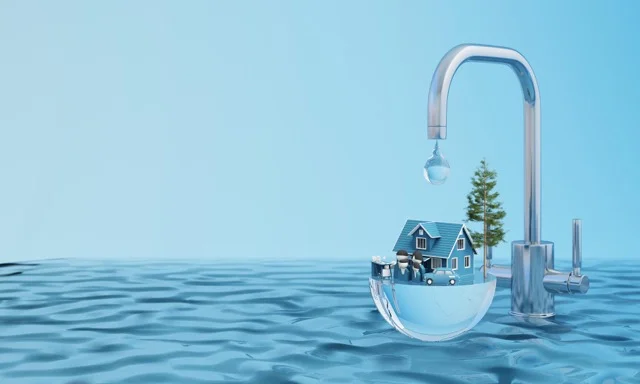Rumored Buzz on Reclaim Waste
Table of ContentsThe 10-Second Trick For Reclaim WasteHow Reclaim Waste can Save You Time, Stress, and Money.The 7-Second Trick For Reclaim WasteThe Ultimate Guide To Reclaim WasteNot known Facts About Reclaim Waste
Domestic sewer waste refers to the waste and items from a property septic storage tank. The appropriate monitoring and disposal of residential sewer waste require liquid waste to be moved to a sewer therapy plant where the proper techniques and devices are applied to purify and dispose of waste.
Industrial waste usually includes prospective risks, such as combustible products or a combination of fluid and solid waste items, and calls for a much more advanced and detailed disposal procedure. The disposal of commercial waste generally entails the filtering of waste prior to transport to ensure secure and correct disposal. Hazardous waste is developed from results and overflow of commercial procedures and manufacturing.
This kind of waste can not use the exact same sewer management transportation or procedures as septic or business fluids. The hazardous waste administration process needs the evaluation and testing of liquid waste prior to it goes through the disposal procedure (industrial wastewater treatment). Runoff waste is the fluid waste that originates from overflow and excess stormwater in very inhabited areas or cities
Runoff waste can cause contamination and flooding if not dealt with properly. Ensuring proper waste management can prevent disasters and lower environmental injury.
Some Known Details About Reclaim Waste
Contact PROS Providers today to find out about our waste administration and disposal solutions and the appropriate ways to take care of the liquid waste you generate.
(https://www.metal-archives.com/users/reclaimwaste1)Do you recognize what happens to your water when you disengage, flush the bathroom or drain pipes the washing device? No? Well, it's worth recognizing. This supposed 'wastewater' is not just an essential resource however, after treatment, will certainly be launched to our land, rivers or the sea. Made use of water from toilets, showers, bathrooms, kitchen area sinks, laundries and commercial processes is called wastewater.

water made use of to cool machinery or tidy plant and tools). Stormwater, a kind of wastewater, is runoff that moves from agricultural and city areas such as roofings, parks, yards, roads, paths and gutters right into stormwater drains, after rainfall. Stormwater moves without treatment directly to neighborhood creeks or rivers, ultimately getting to the ocean.
Reclaim Waste - An Overview
In Queensland, most wastewater is treated at sewer treatment plants. Wastewater is carried from domestic or industrial sites via a system of drains and pump terminals, referred to as sewage reticulation, to a sewer therapy plant. Regional governments develop, maintain and operate most sewage therapy plants. Operators are licensed under the Environmental Management Act 1994 to release treated wastewater at an acceptable ecological requirement into rivers.
The Division of Natural Resources suggests neighborhood federal governments about handling, operating and keeping sewage systems and therapy plants. In unsewered locations, local governments may require homeowners to set up individual or family sewage therapy systems to treat residential wastewater from commodes, kitchens, restrooms and laundries. The Division of Natural Resources authorizes making use of home systems when they are proven to be effective.
In some brand-new class, treatment of some stormwater to get rid of litter, sand and crushed rock has begun making use of gross contaminant catches. Wastewater treatment takes place in four phases: Gets rid of solid issue.
Wastewater after that streams right into huge storage tanks where solids settle and are removed as sludge. Oil and residue are skimmed from the surface area. Uses tiny living microorganisms called micro-organisms to damage down and eliminate staying dissolved wastes and great bits. Micro-organisms and go to website wastes are incorporated in the sludge. Eliminates nitrogen and phosphorus nutrients that might trigger algal blooms in our rivers and threaten water life.
Reclaim Waste Fundamentals Explained
Nutrient elimination is not offered at all sewage therapy plants due to the fact that it calls for costly specialized equipment. Clear liquid effluent generated after therapy might still have disease-causing micro-organisms - liquid waste disposal melbourne.

Most wastewater moves right into the sewage system. Under the Act, regional governments carry out approvals and licences for eco appropriate activities (Ages) involving wastewater releases that may have a local impact.
Indicators on Reclaim Waste You Should Know
Otherwise, examples are taken for research laboratory analysis. Typically numerous examinations are needed to establish the degrees of each of the various contaminants such as oils, hefty metals and pesticides in water. Surveillance provides factual information concerning water top quality and can verify that permit conditions are being satisfied. The details acquired via monitoring gives the basis for making water high quality decisions.